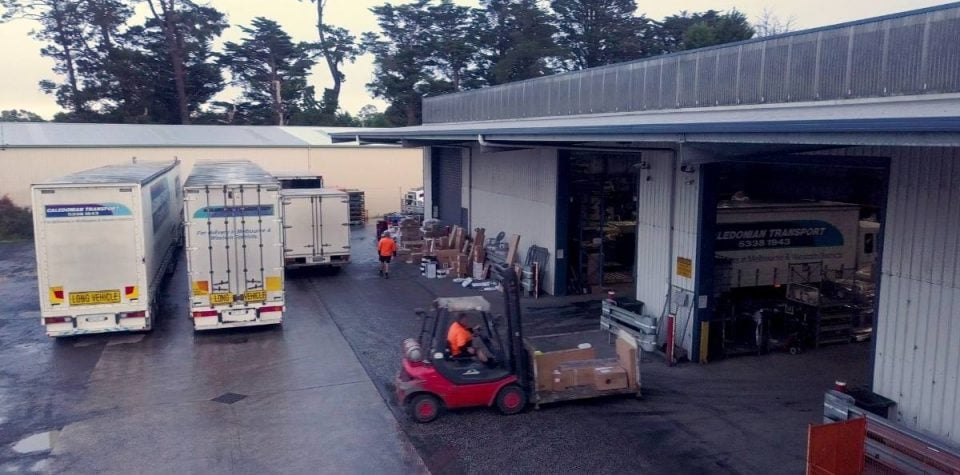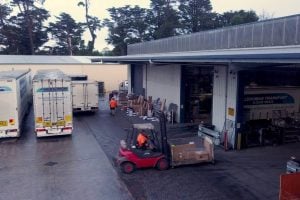Table of Contents:
- The Ancient Olive: A Fruit of History and Mythology
- Olive Groves Around the World
- The Olive Industry in Australia
- The Logistics of Olive Production
- The Role of Logistics Software
- The Fruit of History and Mythology.
How technology is connecting the past with the future in the production of olives in Australia.
Olives, those small, unassuming fruits, have been part of human civilization for thousands of years. They play a significant role in many cuisines around the world and are a go-to snack for almost any occasion. But these versatile little orbs of flavour offer more than just culinary delights to go with a Barossa chardonnay. They also have a rich history, a worldwide presence, and require a complex logistical journey to get them from from grove to table.
So pour a drink, warm up some olives and almonds (in olive oil, of course) and come with us on a journey through time and technology as we sail through the world of olive production.
The Ancient Olive: A Fruit of History and Mythology
The cultivation of olives dates back to ancient civilizations, with evidence of their cultivation found in Mediterranean archaeological sites dating as far back as 5000-6000 BCE. Olives were a staple food for early Greeks and Romans, symbolising peace, wisdom, and fertility. The olive tree was considered sacred and was believed to have been a gift to mortals from the goddess Athena.
The production of olives in ancient times was labour-intensive, involving hand-picking and stone pressing to extract the oil. These methods were a testament to the resourcefulness and dedication of ancient olive farmers. For more information, check out this timeline about the history of olive growing.
Olive Groves Around the World
Today, olives are grown in various regions around the world. However, they thrive in Mediterranean-type climates with hot, dry summers and mild winters. According to statistics published by the International Olive Council, world olive oil production has tripled over the last 60 years. Some of the major olive-producing countries include:
- Spain. Spain is the world's largest producer of olives, known for its diverse olive varieties and high-quality olive oil.
- Italy. The tasty Italian olives are famous for their use in various dishes, including pasta, salads, and antipasti.
- Greece. Greece is renowned for its Kalamata olives, used in Greek salads and many traditional dishes.
- Turkey. Turkey has a long history of olive cultivation, producing both table olives and olive oil.
- Morocco. Moroccan olives are often preserved in a variety of brines and spices that add the flavours of the Sahara and North Africa to the already tasty fruits.
- Tunisia. Tunisian olives are known for their use in olive oil production, with fruity and robust flavours.
As you can see, Australia doesn’t even figure in the list of top olive-producing countries. But Australia’s olive growers are rapidly becoming known for producing some of the world’s best olive oil and table olives.
The Olive Industry in Australia
While Australia may not be the first country that comes to mind when thinking about olives, our olive industry has steadily grown since the early nineties. The warm and dry climates in regions like South Australia, Western Australia, Victoria, and New South Wales provide perfect conditions for olive cultivation.
The Australian olive industry has witnessed an expansion of olive groves and processing facilities since the early 1990s. It has also developed its unique olive varieties and products. Some of the popular Australian olive varieties are Kalamata, Manzanillo, and Ligurian.
Victoria and WA
Olives thrive in temperate regions along the South Eastern and South Western Seaboard of Australia. However, the majority of olive production, approximately 70 per cent, is concentrated in two specific regions: north-central Victoria and northern Perth, Western Australia.
Twenty groves
According to production overview data published by the Australian Olive Oil Association in 2020, the Australian olive industry encompasses approximately 10 million olive trees, distributed across 450 commercial groves spanning over 30,000 hectares. Interestingly, 70 per cent of these olive trees are clustered within just 20 groves.
In terms of olive oil production, Australia produced an estimated 19,736 tonnes (equivalent to 21.5 million litres) from 118,750 fresh tonnes during the 2019 season. This production volume marked a significant increase from the 9,390 tonnes (equivalent to 10.3 million litres of oil) extracted from 52,165 fresh tonnes in 2018. This data underscores the biennial bearing pattern inherent in Australian olive production.
It's worth noting that Australian olive oil production represents a modest fraction, merely 0.6 per cent, of the total global olive oil production for the 2018/19 season, which amounted to 3,131,000 tonnes of olive oil produced from 10 million hectares worldwide.
A growing demand
In terms of consumption, Australians have shown a preference for Extra Virgin Olive Oil (EVOO). EVOO consumption in Australia increased from 63 per cent of olive oil sales in 2017 to 65 per cent in 2019. This shift can be attributed to heightened health awareness and an emphasis on quality.
In 2018/19, olive oil imports to Australia amounted to 33,274 tonnes (equivalent to 36 million litres), primarily during 'off' crop years for Australian production.
In total, Australian apparent consumption of olive oil in 2019 reached 50,707 tonnes (equivalent to 55 million litres), translating to an average consumption rate of 2.1 litres per person per year.
Extra virgin
Australian olive oil production typically consists of 85 to 90 per cent Extra Virgin Olive Oil (EVOO), depending on seasonal variations. This contrasts sharply with Mediterranean production, where only 25 per cent is EVOO, 25 per cent is Virgin Olive Oil (VOO), and the remaining 50 per cent falls under the Lampante classification, requiring further processing before consumption.
The Logistics of Olive Production
The journey of olives from tree to table involves a series of intricate logistical processes to ensure that these delicious fruits reach consumers in their best form. Like all agricultural products, olives are susceptible to pests and disease, need an adequate water supply at critical times, and have to be harvested at the perfect moment.
Here is a brief overview of the logistics involved.
Growing pains
Olive growers need to be highly aware of the many pests and diseases that can affect their trees during the ground season. Sprays and treatments can be detrimental to the quality of the finished olive oil or fruits so growers must maintain highly detailed records about any chemicals used on their trees.
Harvesting
Olive harvesting is a crucial step in the production process. Traditionally, olives were hand-picked, but modern olive farms employ mechanical harvesters to streamline the process. Harvest timing is critical, as olives are at their best when harvested at the right level of ripeness. In Australia, olives are typically harvested from April to August.
Processing
Once harvested, olives undergo processing to transform them into the products we know and love. Processing may include washing, crushing, and pressing to extract olive oil or curing olives for table consumption. The choice of processing method depends on the desired end product.
Packaging
Olive products are packaged in various forms, from bottles of extra virgin olive oil to jars of marinated olives. Proper packaging ensures product freshness and extends shelf life. Barcodes and “Best By” information aids retailers in maintaining the best quality of products on their shelves.
Distribution
The distribution of olive products involves transporting them from rural production facilities to distribution centres, wholesalers, and retailers across Australia and to discerning consumers worldwide. Efficient logistics are essential to ensure each batch of olive oil or olives reaches the correct destination and to maintain product quality during transit.
The Role of Logistics Software
In ancient times, olives and olive oil were often transported in clay amphora: jug-shaped containers sealed with wax. Many sunken ships from antiquity have been found to contain hundreds or even thousands of these amphorae.
In the modern era, logistics software plays a vital role in optimising both the production and distribution of olives and olive products.
Inventory Management
Olive oil and edible olives need to be consumed while they are at their freshest. Logistics software helps olive producers manage their inventory efficiently, ensuring that overstocking of products does not occur and that stocks are sold during their optimum period of shelf life. It tracks the quantity and quality of olives and olive products in stock, ensuring that production meets demand without overstocking or understocking.
Route Optimisation
With olive farms usually located in remote rural areas, efficient transportation is crucial to ensure olives and olive products reach their destinations promptly. Logistics software plays a vital role in optimising pickup and delivery from farm gates, production and bottling facilities, and delivery routes to wholesalers and retailers.
Quality Control
Maintaining the quality of olives and olive products throughout the supply chain is essential. Logistics software allows producers to monitor and control factors like temperature, humidity, and handling conditions to prevent spoilage or damage to containers and packaging.
Demand Forecasting
Olives are a great summer snack when you are sitting beside the pool or scoffing a charcuterie platter while the cricket is on. But they are also a year-round addition to dishes such as pizza, focaccia bread and puttanesca. So demand forecasting plays a critical role in ensuring that olives and olive oil are available for every occasion and seasonal eventuality.
Logistics software uses data analysis and historical trends to forecast demand accurately. This enables olive producers to adjust production schedules and distribution plans accordingly.
Sustainability in Olive Production
Sustainability is a growing concern in the olive industry, as consumers increasingly seek environmentally friendly products. Olive growers are adopting sustainable farming practices, such as organic farming, water-efficient irrigation, and reduced chemical usage. Logistics software plays a role in promoting sustainability by optimising transportation routes to reduce carbon emissions.
The Fruit of History and Mythology.
The production of olives is not just about cultivating a fruit. It's a harmonious blend of history, tradition, innovation, and logistics. From ancient civilizations to modern olive groves around the world, olives have maintained their significance in human culture and cuisine.
In Australia, the olive industry continues to grow, offering unique varieties and products to consumers. The logistical journey of olives, from harvesting to distribution, relies on efficient processes and logistics software to ensure the highest quality and sustainability.
So as you savour the flavour of olives and olive oil in your dishes, it is easy to appreciate the intricate logistical efforts that bring these delightful fruits to our tables: from the ancient world of Greek and Roman mythology to the healthy and tasty future.



